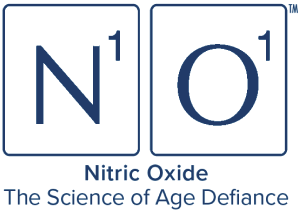Nitric Oxide and Cognitive Function: Exploring the Connection

By Nathan S. Bryan, Ph.D.
08/28/2024
Nitric oxide (NO) is a molecule that has been shown to play a critical role in various physiological functions in the body. One of the areas where NO has been found to have a significant impact is cognitive function. Research has shown that NO plays a crucial role in learning and memory, and it has been linked to various cognitive disorders.
Studies have found that NO is involved in the regulation of synaptic plasticity, which is the ability of the brain to change and adapt in response to new experiences. This process is essential for learning and memory, and it is thought that NO helps to strengthen the connections between neurons, which enhances cognitive function. Additionally, NO has been found to play a role in the sleep-wake cycle and hormone secretion, which are also critical for cognitive function.
While NO has been found to have a positive impact on cognitive function, research has also suggested that excessive amounts of NO can be harmful to the brain. This is because NO is a free radical, which means that it can cause damage to cells and tissues in the body. Therefore, it is important to maintain a balance of NO in the body to ensure optimal cognitive function.
Basics of Nitric Oxide in the Brain
Nitric oxide (NO) is a gaseous molecule that acts as a neurotransmitter and has a crucial role in signaling pathways involved in numerous physiological processes in the central nervous system (CNS) [1]. NO is synthesized from L-arginine by a family of enzymes called nitric oxide synthases (NOS). There are three isoforms of NOS: neuronal NOS (nNOS), endothelial NOS (eNOS), and inducible NOS (iNOS) [2].
Chemical Properties of Nitric Oxide
NO is a highly reactive free radical that is synthesized and released on demand by neurons and glial cells in the brain [1]. It is a small, lipophilic molecule that can easily cross cell membranes and diffuse through tissues, allowing it to act as a local messenger [3]. NO has a short half-life of a few seconds, and its physiological role is concentration-dependent, often restricting its action to the immediate vicinity of its site of production [2].
Nitric Oxide Synthase Enzymes
NOS enzymes catalyze the conversion of L-arginine to NO and L-citrulline using molecular oxygen and NADPH as cofactors [2]. The three isoforms of NOS differ in their tissue distribution, regulation, and function. nNOS is primarily found in neurons and regulates neurotransmission, synaptic plasticity, and memory formation [4]. eNOS is mainly expressed in endothelial cells and regulates blood flow and vascular tone [5]. iNOS is induced by inflammatory cytokines and is involved in the host defense against pathogens and tissue damage [6].
In summary, NO is a crucial mediator of neuronal communication and plays a vital role in the regulation of various physiological processes in the CNS. Its chemical properties and the isoforms of NOS that synthesize it are essential to understanding its function in the brain.
Nitric Oxide’s Role in Cognitive Functions
Nitric oxide (NO) is a versatile molecule that plays a key role in the development and survival of mammalian species by endowing brain neuronal networks with the ability to make continual adjustments to function in response to moment-to-moment changes in physiological input [1]. NO is a gaseous molecule that has a central role in signaling pathways involved in numerous physiological processes such as vasodilation, neurotransmission, inflammation, apoptosis, and tumor growth [2].
Memory and Learning
NO plays a crucial role in memory and learning processes. Studies have shown that NO is involved in the regulation of long-term potentiation (LTP) and long-term depression (LTD), which are the cellular mechanisms underlying learning and memory [1]. NO also plays a role in the formation of new memories, as it has been shown that inhibition of NO synthesis impairs memory consolidation [2].
Neurotransmission and Signaling
NO is a retrograde neurotransmitter that plays a role in the regulation of cerebral blood flow and has important roles in intracellular signaling in neurons from the regulation of the neuronal metabolic status to the dendritic spine growth [4]. NO is synthesized by three isoforms of NO synthase (NOS): neuronal NOS (nNOS), endothelial NOS (eNOS), and inducible NOS (iNOS). nNOS and eNOS are constitutively expressed in the brain and regulate basal NO levels, while iNOS is induced in response to pathological and physiological events [3].
Neuroprotection and Aging
NO also plays a role in neuroprotection and aging. NO has been shown to have both neuroprotective and neurotoxic effects, depending on the concentration and duration of exposure [2]. NO has been implicated in the pathogenesis of several neurodegenerative diseases, including Alzheimer’s disease and Parkinson’s disease [3]. In addition, NO has been shown to play a role in the aging process, as NO levels decrease with age [1].
In summary, NO plays a crucial role in cognitive functions such as memory and learning, neurotransmission and signaling, and neuroprotection and aging. NO is a versatile molecule that regulates many physiological processes in the brain, and its dysregulation has been implicated in several neurological disorders.
-
Sale!

Nitric Oxide Dyno Duo
Original price was: $161.97.$121.48Current price is: $121.48. Add to cart -
Sale!

Age-Defiance Serum
Original price was: $119.98.$89.98Current price is: $89.98. — or subscribe and save 10% Add to cart -
Sale!

N1O1 Nitric Oxide Lozenges
Original price was: $59.98.$44.98Current price is: $44.98. — or subscribe and save 10% Add to cart -
Sale!

Nitric Oxide Nutrition by Dr. Nathan S. Bryan – NEW BOOK
Original price was: $14.95.$11.21Current price is: $11.21. Add to cart

